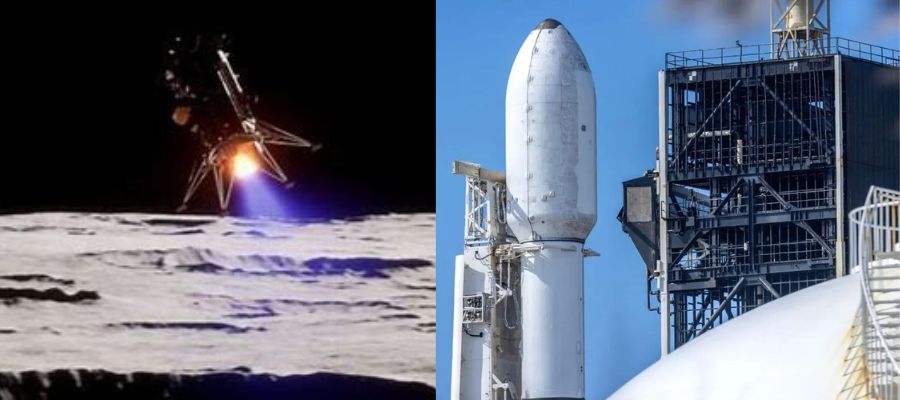On February 22, 2024, the private spacecraft Odysseus, designed by Intuitive Machines, achieved a remarkable feat in space exploration history by successfully landing on the moon’s surface near the south pole. This monumental event not only marked the first successful landing of a commercial spacecraft on the moon but also represented the first U.S. controlled descent to the lunar surface since Apollo 17 in 1972. Despite facing technical challenges, the mission of Odysseus prevailed, contributing significant advancements to lunar exploration and paving the way for future endeavors in space.

The Significance of Odysseus
Odysseus, developed by Intuitive Machines, carried out a multitude of tasks aimed at advancing space exploration and supporting NASA’s objectives. The spacecraft housed six experiments for NASA, ranging from communication and navigation technologies to scientific data collection on space weather and lunar surface interactions.
Additionally, it facilitated commercial endeavors by accommodating payloads from Columbia Sportswear and sculptor Jeff Koons. The inclusion of insulation material by Columbia Sportswear further showcased the versatility of Odysseus in adapting to the lunar environment.
The Mission and Location
Touching down near the moon’s south pole, specifically in the vicinity of Malapert A, Odysseus strategically positioned itself to explore an area of immense interest due to its suspected water ice deposits.
This location, relatively flat compared to its surroundings, provided valuable insights into potential resources for future missions. Despite the challenges posed by the lunar environment, the solar-powered lander aimed to operate efficiently until the onset of the long lunar night.
Intuitive Machines lands on the moon in historic first for a U.S. company
The Future of Lunar Exploration
The success of the Odysseus mission signifies a pivotal moment in NASA’s quest to commercialize lunar activities and lay the groundwork for future human missions under the Artemis program. By leveraging innovative technologies and fostering collaborations with commercial and international partners, NASA aims to establish a sustained presence on the moon.
This endeavor serves as a crucial stepping stone towards the ultimate goal of sending astronauts to Mars, utilizing the knowledge gained from lunar exploration to propel humanity further into the cosmos.
Read This Article: Top 3 Artificial Intelligence Software for Data Analysis in 2024
FAQ
- Q: What was the name of the private spacecraft that made the first US moon landing in 50 years?
A: The private spacecraft that achieved this historic feat was Odysseus, designed by Intuitive Machines, landing near the moon’s south pole on February 22, 2024. - Q: What was the significance of the Odysseus mission?
A: The Odysseus mission marked the first successful landing of a commercial spacecraft on the moon, showcasing advancements in space exploration and contributing valuable data for future lunar endeavors. - Q: What is the Artemis program?
A: The Artemis program represents NASA’s initiative to establish a sustained presence on the moon, paving the way for future human missions to Mars. Through innovative technologies and international collaborations, NASA aims to expand humanity’s reach into the cosmos.
Conclusion
In summary, the Odysseus mission epitomizes the spirit of exploration and innovation, demonstrating the capabilities of private entities in advancing space exploration alongside governmental agencies like NASA. As humanity ventures further into the cosmos, endeavors such as Odysseus serve as beacons of inspiration, igniting curiosity and pushing the boundaries of what is possible in the vast expanse of space.
